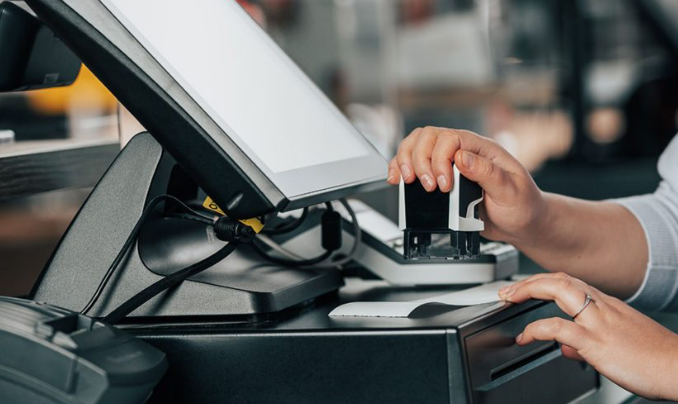POS Systems vs. Payment Processors: What’s the Difference?

In the world of retail, hospitality, and food service, efficient transaction handling is essential. While the terms “POS system” and “payment processor” are often used interchangeably, they refer to distinct technologies that serve different functions in the sales process. Understanding these differences is crucial for business owners looking to streamline operations, enhance customer experience, and maximize profitability. Let’s dive into what POS systems and payment processors are, how they work together, and why it’s essential to understand their unique roles.
What Is a POS System?
A Point of Sale (POS) system is a combination of hardware and software that manages sales, inventory, customer data, and various operational tasks in a business. Essentially, it serves as the central hub where transactions take place, whether it’s in a café, retail store, or restaurant. Modern POS systems go beyond basic sales functions and include a suite of tools designed to make business operations more efficient.
Key functions of a POS system include:
- Sales Management: Enables order taking, checkout, and receipt printing.
- Inventory Tracking: Tracks stock levels in real-time, automating inventory management.
- Customer Relationship Management (CRM): Helps businesses store customer data, track purchase history, and engage customers with loyalty programs.
- Employee Management: Tracks employee hours, sales performance, and roles.
- Reporting and Analytics: Provides valuable data insights, such as top-selling items, sales trends, and customer preferences.
POS systems often come with touchscreen terminals, barcode scanners, receipt printers, and cash drawers. Some systems even offer mobile POS options, enabling businesses to process sales anywhere within the establishment or even remotely.
What Is a Payment Processor?
A payment processor, on the other hand, is a service that facilitates the transfer of funds between a customer’s bank account and a business’s bank account. Payment processors handle the secure transmission of credit card, debit card, and digital wallet information, ensuring that the transaction is completed smoothly and securely.
Functions of a payment processor include:
- Authorization: Verifies if the customer’s card is valid and has sufficient funds.
- Data Encryption: Protects sensitive financial information by encrypting card details during the transaction.
- Transaction Settlement: Transfers funds from the customer’s bank to the merchant’s account after processing fees are deducted.
- Fraud Prevention: Employs security measures like tokenization and PCI compliance to minimize fraud risk.
Payment processors are critical in enabling a business to accept various forms of electronic payments, including credit cards, debit cards, and digital wallets like Apple Pay or Google Wallet.
How POS Systems and Payment Processors Work Together
While POS systems manage the overall transaction, inventory, and customer data, payment processors specifically handle the transfer of funds in electronic payments. When a customer makes a purchase, the POS system sends the transaction details to the payment processor, which then verifies and authorizes the payment. Once authorized, the processor facilitates the fund transfer from the customer’s bank account to the business’s account, completing the transaction.
Without a payment processor, a POS system would be limited to cash transactions. Similarly, a payment processor alone wouldn’t be able to handle inventory tracking, employee management, or customer engagement. Together, they create a complete system that supports both business operations and electronic payment capabilities.
Key Differences Between POS Systems and Payment Processors
- Primary Functionality:
- POS Systems focus on managing sales, inventory, customer data, and operations.
- Payment Processors handle the secure transfer of funds in card or digital transactions.
- Hardware and Software Integration:
- A POS system typically includes both hardware (e.g., terminals, scanners) and software.
- Payment processors operate mainly as a service, although they often work with hardware like card readers.
- Data and Analytics:
- POS systems provide detailed reports on sales trends, inventory levels, and customer behavior.
- Payment processors focus more on payment data, such as transaction volumes, average ticket size, and payment types.
- Customer Interaction:
- POS systems manage the customer-facing aspects of the transaction, like order entry and receipt printing.
- Payment processors work behind the scenes to verify and process payments securely.
- Security and Compliance:
- POS systems often come with basic security features, but most security measures for payment handling, like encryption and PCI compliance, are managed by the payment processor.
Choosing the Right Solution for Your Business
Some POS systems come bundled with payment processing services, while others allow you to integrate with a third-party payment processor. The best setup depends on your business’s needs, size, and transaction volume.
- Integrated POS and Payment Processing: An all-in-one POS and payment processing solution simplifies vendor relationships, offers streamlined support, and may reduce overall costs. For example, many cloud-based POS providers, like Square or Toast, offer built-in payment processing to ensure a seamless experience.
- Standalone POS with External Payment Processor: If a business has specific needs, like lower transaction fees from a specialized payment processor, it may be beneficial to keep them separate. Larger businesses or those with high transaction volumes may find it cost-effective to negotiate rates with dedicated payment processors like Stripe or PayPal.
Conclusion: POS Systems and Payment Processors as Essential Partners
Understanding the distinct roles of POS systems and payment processors can help business owners make informed decisions about which tools to implement. A POS system manages critical business functions, including sales tracking, inventory management, and customer engagement, while a payment processor ensures smooth, secure electronic payment handling. Together, they create an efficient, integrated ecosystem that supports seamless operations, improves customer experience, and protects sensitive payment data.
Investing in the right POS system and payment processor combination can ultimately enhance a business’s efficiency, provide valuable insights, and support growth by offering customers a smooth and secure transaction experience.
Visit our site at www.dibtech.com.au
Visit our YouTube channel for tutorials Dibtech






